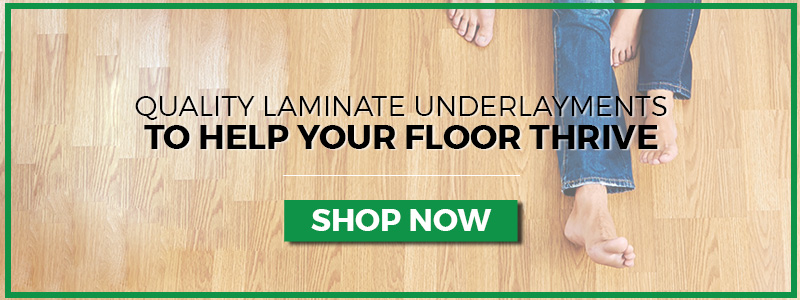These days, professionals and DIYers alike can choose from a wide range of materials when completing their flooring installation. This cost-effective project can deliver considerable comfort and value for your property, but the proper precautions should be taken to protect the quality of your investment. Failing to protect your new floors can lead to several problems, including costly moisture damage, uneven surfaces, and loud noises from the neighbors above.
To protect modern flooring installations from problems such as these, Eco Cork Foam was created with the intent of providing long-lasting, affordable, and eco-friendly results. Our underlayment strives to rise above the pack of competitors, offering amazing results that you have to see (and feel) to believe!
Deciding On a Flooring Underlayment
It can prove to be challenging trying to find the best underlayment for your laminate flooring, especially if you aren’t sure whether or not you need it in the first place. Homeowners and flooring specialists can both invest in a variety of floor underlayment materials to find the perfect fit for their application, benefitting from long-term quality and peace of mind as a result. A quality laminate underlayment can deliver the support, comfort, protection, and acoustic benefits needed to provide comfort and quality in the home.
Before you decide to go all-in or skip out on flooring underlayments, be sure to ask the following questions. If you’re ready to create amazing outcomes for your home or project, be sure to call us or try our product for yourself!
What is the subfloor comprised of?
The surface beneath your laminate flooring will play a large role in whether or not you need a floor underlayment. Subfloors that go over crawl spaces or other non-climate-controlled areas have the potential to harbor a lot of moisture regardless of the subfloor material, so be sure to use discretion when deciding on a floor underlayment.
- Concrete — If you are planning on installing laminate over concrete, we strongly recommend investing in Eco Cork Foam for protection from future damages. Damp, moist basements can harbor considerable amounts of moisture, which may seep into the center of your laminate flooring. Once this happens, replacement is the only option!
- Plywood — Installing laminate over plywood is a cost-effective way to provide flat, clean surfaces that block much of the concerns associated with moisture problems.
- OSB — Oriented strand board is a stronger material than plywood, and will likely provide a considerable barrier against vapor and moisture infiltration.
Homeowners may have other subfloors in use. Before you get to work, we suggest completing some research and planning to cover all of your bases against moisture infiltration.
Does my subfloor need to be perfect?
While your laminate flooring relies on smoothness to provide the best results, it’s important to remember that minor changes in the surface are acceptable. Homeowners looking for perfection will spend a lot of time and energy working on a problem that may yield few results. Keep in mind that any disruptions in the surface of your subfloor may result in unwanted results once your laminate flooring is installed. Our laminate underlayment is designed to provide a buffer layer that smooths out any minor imperfections, leaving you with a smooth surface that is ready for the top lift.
There are many questions you can ask to ensure you are making the right choice with your floor underlayment. Check back here next time for our second part, which will discuss the acoustical demands of modern flooring applications. If you’re ready to outfit your laminate flooring with a quality product, be sure to call us at tel:18557040181, contact us online, or try a roll of our product from your local Home Depot!


